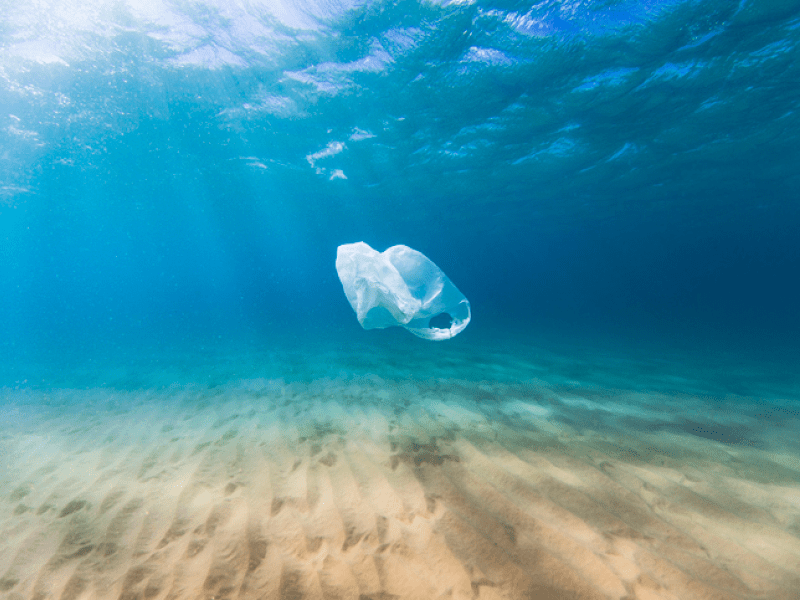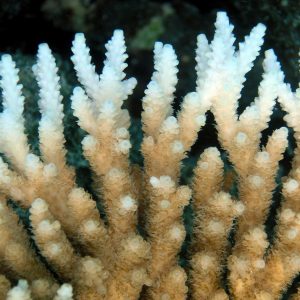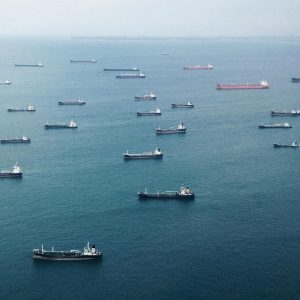Ocean Pollution: The Dirty Facts
Covering more than 70 percent of our planet, oceans are among the earth’s most valuable natural resources. They govern the weather, clean the air, help feed the world, and provide a living for millions.

Written by Melissa Denchak. Article provided by the Natural Resources Defense Council (NRDC). Read the original story here.
Covering more than 70 percent of our planet, oceans are among the earth’s most valuable natural resources. They govern the weather, clean the air, help feed the world, and provide a living for millions. They also are home to most of the life on earth, from microscopic algae to the blue whale, the largest animal on the planet. Yet we’re bombarding them with pollution. By their very nature—with all streams flowing to rivers, all rivers leading to the sea—the oceans are the end point for so much of the pollution we produce on land, however far from the coasts we may be. And from dangerous carbon emissions to choking plastic to leaking oil to constant noise, the types of ocean pollution humans generate are vast. As a result, collectively, our impact on the seas is degrading their health at an alarming rate. Here are some ocean pollution facts that everyone on our blue planet ought to know.
Ocean Acidification
When we burn fossil fuels, we don’t pollute just the air but the oceans, too. Indeed, today’s seas absorb as much as a quarter of all man-made carbon emissions, which changes the pH of surface waters and leads to acidification. This problem is rapidly worsening—oceans are now acidifying faster than they have in some 300 million years. It’s estimated that by the end of this century, if we keep pace with our current emissions practices, the surface waters of the ocean could be nearly 150 percent more acidic than they are now.

Oregon State University
So what happens when the ocean’s chemistry is knocked out of whack? Marine ecosystems—and the coastal economies that depend on them—go out of whack, too. Take reefs and shellfish, for starters. To build their shells and skeletons, creatures like mussels, clams, coral, and oysters require calcium carbonate (the same compound found in chalk and limestone). But the ocean’s carbonate levels go down when acidity levels rise, threatening the survival of these animals. Bivalves are at the bottom of the food chain, so these effects ripple up to many fish, seabirds, and marine mammals. More-acidic waters also contribute to the bleaching of coral reefs and make it harder for some types of fish to sense predators and for others to hunt prey.
Meanwhile, ocean acidification threatens us land-dwellers, too. The billion-dollar American shellfish industry is the economic backbone of myriad coastal communities, from Louisianato Maine to Maryland. Already, declining harvests linked to more-acidic waters are estimated to have cost the Pacific Northwest’s oyster industry nearly $110 million and 3,200 jobs.
Trash In The Ocean
The majority of the garbage that enters the ocean each year is plastic—and here to stay. That’s because unlike other trash, the single-use grocery bags, water bottles, drinking straws, and yogurt containers, among eight million metric tons of the plastic items we toss (instead of recycle), won’t biodegrade. Instead, they can persist in the environment for a millennium, polluting our beaches, entangling marine life, and getting ingested by fish and seabirds.
Where does all this debris originate? While some is dumped directly into the seas, an estimated 80 percent of marine litter makes its way there gradually from land-based sources―including those far inland―via storm drains, sewers, and other routes. (An excellent reason why we should all reduce plastic pollution, no matter where we live.) Oil from boats, airplanes, cars, trucks, and even lawn mowers is also swimming in ocean waters. Chemical discharges from factories, raw sewage overflow from water treatment systems, and stormwater and agricultural runoff add other forms of marine-poisoning pollutants to the toxic brew.
Ocean Noise
The ocean is far from a “silent world.” Sound waves travel farther and faster in the sea’s dark depths than they do in the air, and many marine mammals like whales and dolphins, in addition to fish and other sea creatures, rely on communication by sound to find food, mate, and navigate. But an increasing barrage of human-generated ocean noise pollution is altering the underwater acoustic landscape, harming—and even killing—marine species worldwide.

Anngu Chen/EyeEm
Consider the incessant din of the roughly 60,000 commercial tanker and container ships that ply the seas at any given time. The underwater racket that results creates a kind of “smog” that reaches nearly every corner of the ocean and shrinks the sensory range of marine wildlife. High-intensity sonar used by the U.S. Navy for testing and training causes some of the same effects—and has been linked to mass whale strandings, too.
Meanwhile, in the hunt for offshore oil and gas, ships equipped with high-powered air gunsfire compressed air into the water every 10 to 12 seconds for weeks to months on end. Traveling as far as 2,500 miles, these deafening seismic blasts disrupt foraging, mating, and other vital behaviors of endangered whales (and may ultimately push some, such as the North Atlantic right whale, to extinction). The blasts lead some commercial fish species to abandon their habitat—a direct hit on coastal economies dependent on catch rates; they also injure and kill marine invertebrates, including scallops, crabs, and squid.
Offshore Drilling
In addition to noise pollution, the oil and gas industry’s routine operations emit toxic by-products, release high levels of greenhouse gases, and lead to thousands of spills in U.S. waters annually. That oil can linger for decades and do irreversible damage to delicate marine ecosystems. Take the 1989 Exxon Valdez tanker spill in Alaska’s Prince William Sound, from which oil still remains, or the BP Deepwater Horizon offshore drilling disaster in 2010, which spread millions of gallons of oil throughout the Gulf of Mexico. But even smaller spills pollute the ocean (and the air) with long-lasting impacts. Even the most advanced cleanup efforts remove only a fraction of the oil, and sometimes they use hazardous technologies. Chemical dispersants used in the largest spill response efforts—1.8 million gallons were released into the Gulf after the BP disaster—are dangerous pollutants themselves.
Ocean Pollution And You
The fate of our seas is not only up to the government or industry. Our individual, daily actions matter, too. You can start by reducing water pollution and runoff at home, being more mindful of your plastic consumption, or organizing a cleanup of your local waterway. You can also support the work of NRDC and other environmental advocacy groups as well as other businesses and organizations that work to preserve our coasts and waters.













